Web app development three-tier architecture – understanding the differences
21 November 2022 | Noor Khan
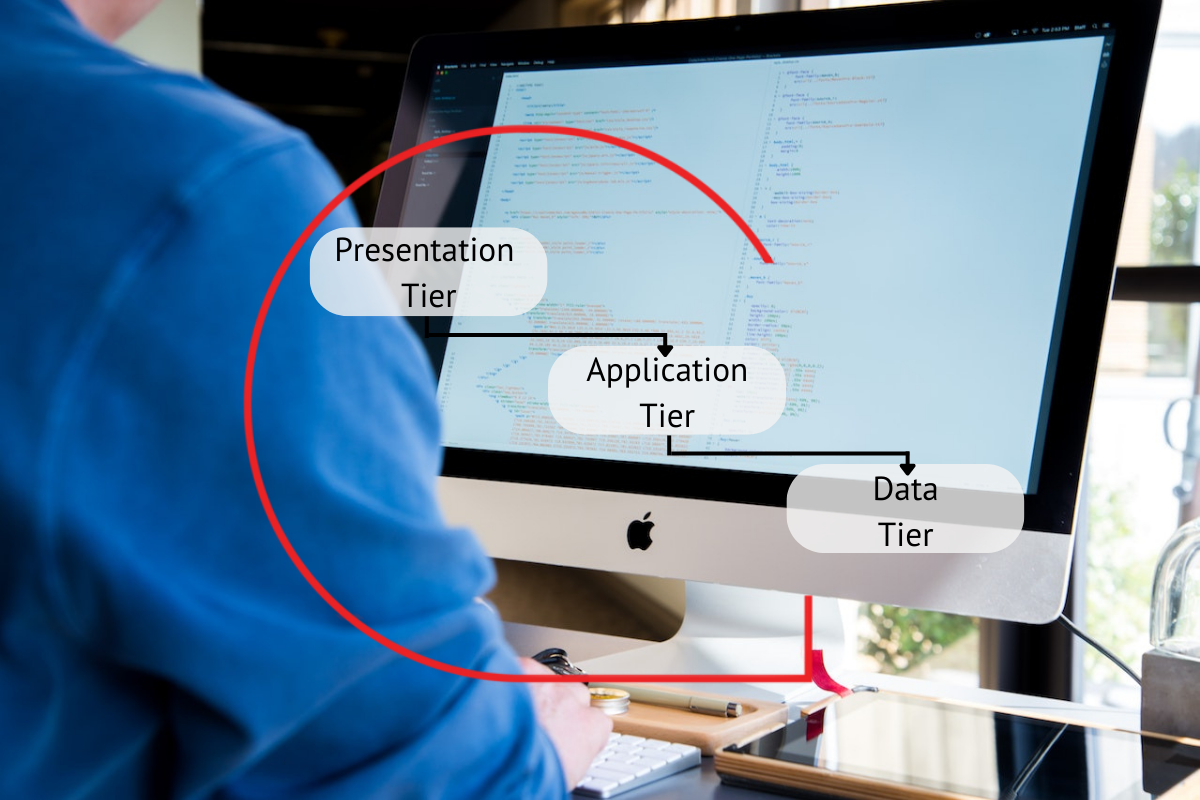
There are multiple architectures for web app development. In this article, we will look at web application development and the three-tier architecture, which includes the presentation tier, the application tier which is also known as the logic tier and the data tier.
We will explore the three tiers, the key technologies used to build each tier and the benefits of the three-tier architecture compared to some of the others including the two-tier structure and the N-tier structure.
The three tiers of web app development and what they mean
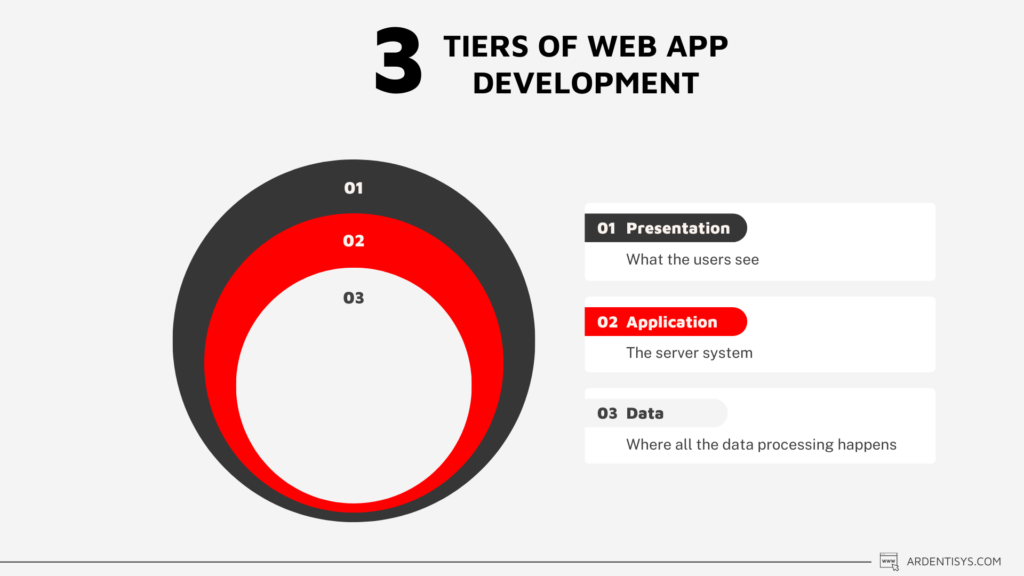
Presentations tier
The presentation tier of a web app is the tier which is visible to the user. This tier is deployed to the device whether it is a desktop or a tablet through a web app. The communication between the presentation tier and the application tier is carried out with an API (Application Programming Interface).
Application tier
The application tier which is also known as the logic tier is the middle tier of web app development. It is the server system, whether on-premise or on the cloud, and it supports and main functionality of the app.
Data tier
The data tier of the web app processes and stores all the app data. This database can be hosted on an on-premise server or on the cloud which depends on the technologies adopted for the build of this tier.
Most popular technologies to build the three-tier architecture
Presentations tier technologies
Some of the most common technologies used to build the presentation tier of a web app are HTML, CSS and JavaScript. These are some of the leading programming languages which are used widely by developers across the world.
Application tier technologies
The application can be developed using many technologies including the like of Python, Java, PHP and Ruby. Your programming language of choice will depend on your end requirements for the web app and its functionality.
Data tier technologies
Some of the most common and world-renowned technologies which are used for the data tier of a web app include MySQL, Oracle MongoDB, PostgreSQL and Microsoft SQL Server.
Key benefits of adopting the three-tier architecture
The following are the key benefits of adopting the three-tier architecture for your web app development:
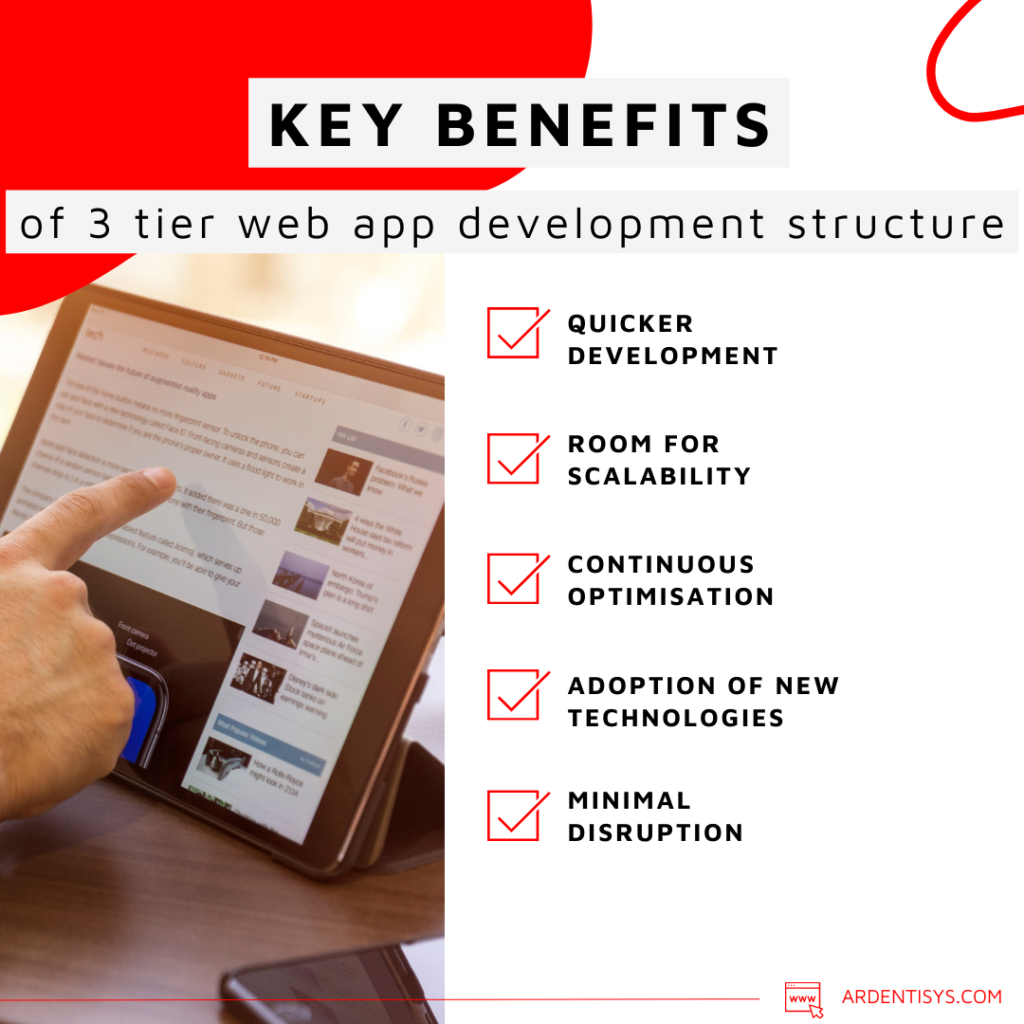
Quicker development
As each tier can be developed independently and simultaneously, this can result in a much quicker development enabling speedy go-live.
Room for scalability
As the three tiers work together but are independent of one another this offers room for scalability. For example, if the user base for a web app was significantly increasing, then the data tier can be altered in terms of the technology or the type of database being employed to allow for this increase in data to ensure the web app functions effectively. This can be done without having to make significant changes to the entire app.
Optimisation and updates
Continuous optimisation and updates can be made as and when necessary to each tier without having to update the entire app.
Adoption of new technologies
Organisations can easily adopt the latest technologies which may be suitable for each tier of the app. For example, if Angular is used to develop the presentations tier of the web app, then they may want to update the presentation to the latest version of Angular. This can be done easily without having to update the entire app.
Minimal disruption to the organisation
Updates and changes to the app will cause disruption especially if it takes a long time. However, updates can be made tier by tier which can minimise the disruption of the process as each update on each tier will be isolated from one other.
Other web app development architectures to consider
Two-tier architecture
The two-tier architecture can be the more cost-efficient solution compared to a three-tier structure, however, it will present some limitations such as scalability which is one of the core benefits of the three-tier structure. The two-tier structure essentially removes the application structure and consists of the presentation tier (or interface) which runs on the client and the data structure on a server.
N-tier architecture
The N-tier architecture for software consists of multiple layers and tiers. The N-tier architecture also has three tiers including the web tier, the middle tier and the data tier. Additionally, you can adopt two different methods of the N-tier architecture which are the open layer (when a layer can communicate with another) and the closed layer architecture (one layer can only communicate with the next immediate layer). The N-tier architecture is great for IaaS (infrastructure-as-a-service) applications or when using managed services.
Ardent web app development services
Ardent has worked with several leading technologies including JavaScript, Python, PHP, Ruby, MongoDB, Oracle and more to deliver secure, scalable and robust web apps. If you are looking to get started on bringing your vision to life with a web app to fulfil your requirements and to help overcome your business challenges, we can help. Get in touch to find out more or to set up a discovery call where we can help find the right solution for you.
Ardent Insights
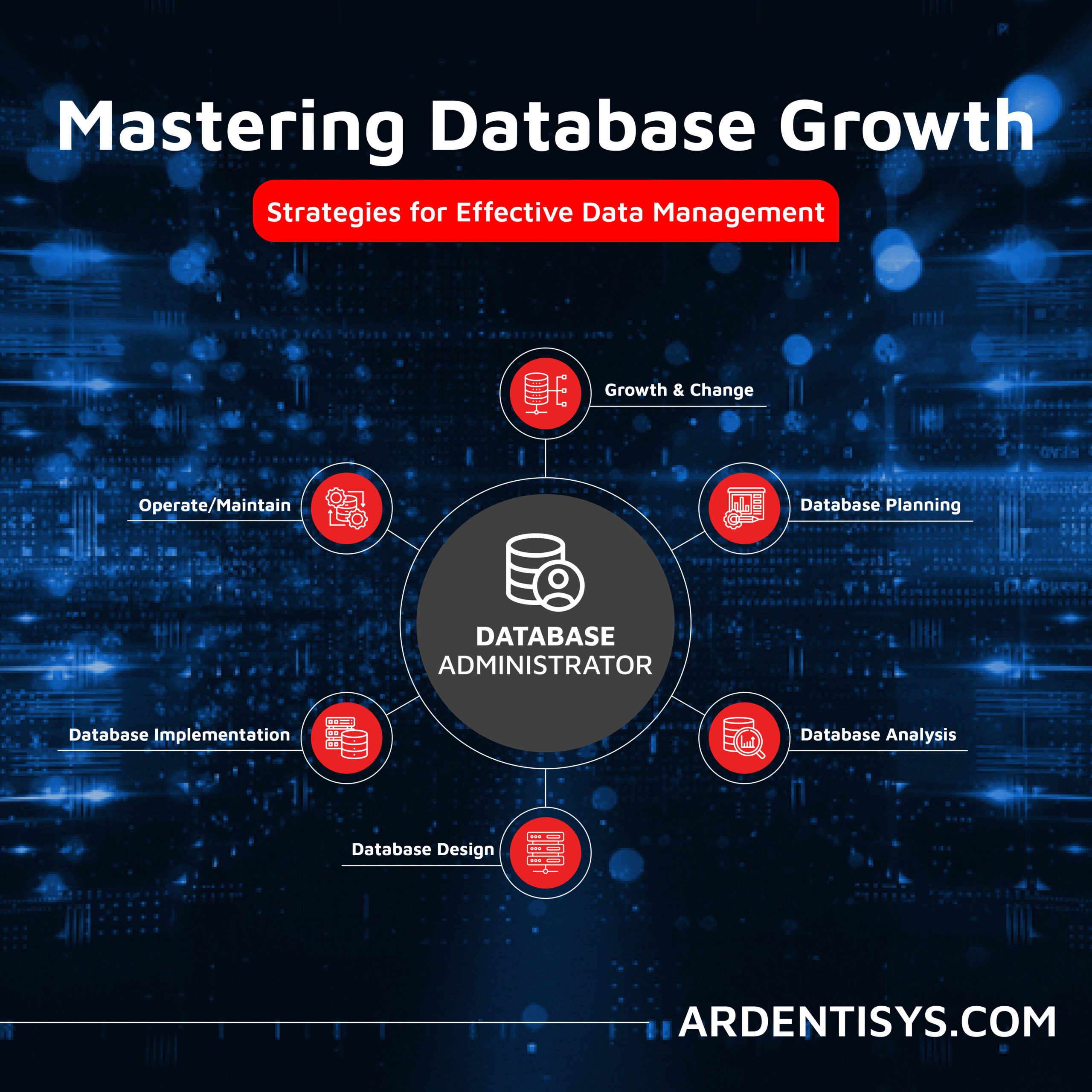
Overcoming Data Administration Challenges, and Strategies for Effective Data Management
Businesses face significant challenges to continuously manage and optimise their databases, extract valuable information from them, and then to share and report the insights gained from ongoing analysis of the data. As data continues to grow exponentially, they must address key issues to unlock the full potential of their data asset across the whole business. [...]
Read More... from Web app development three-tier architecture – understanding the differences
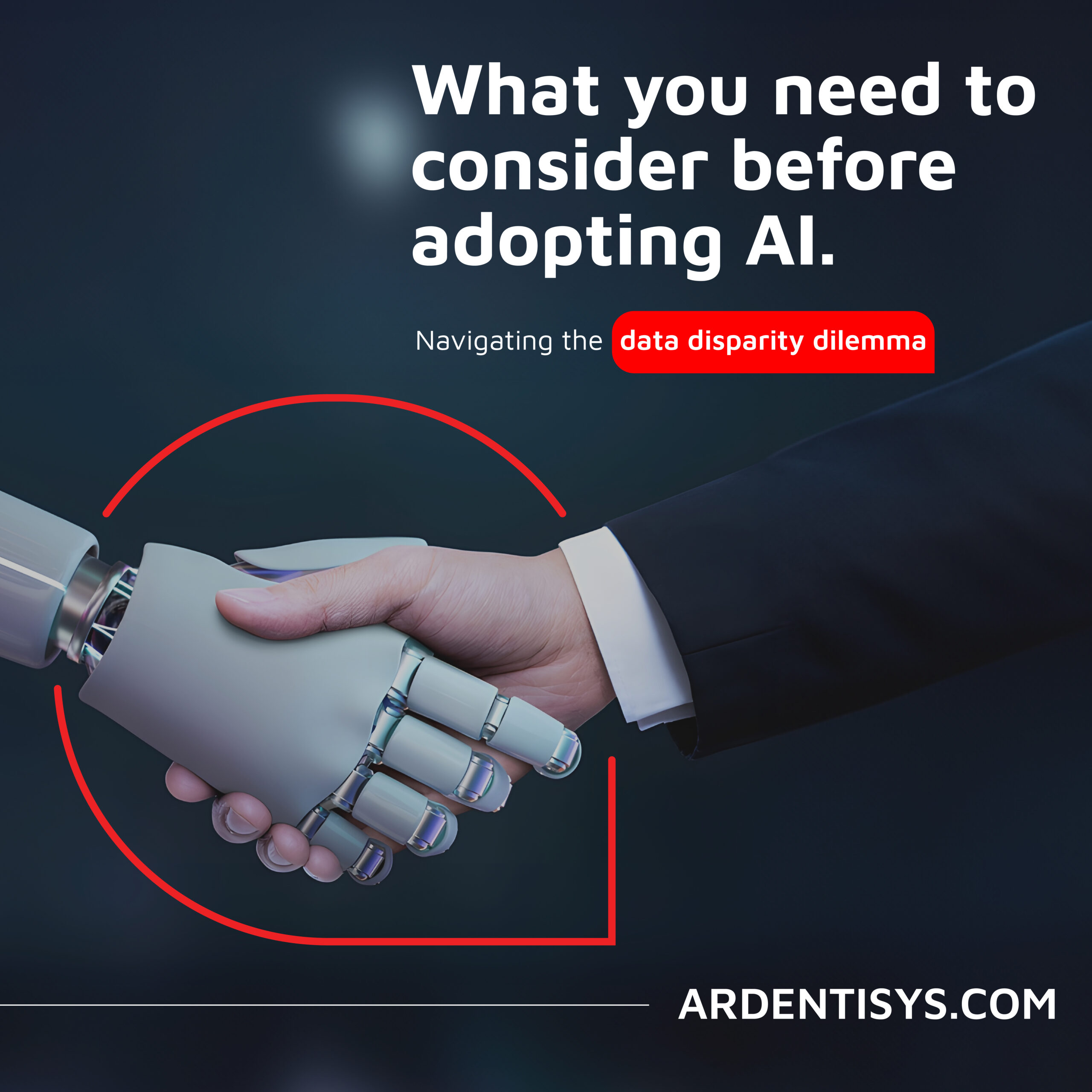
Are you considering AI adoption? We summarise our learnings, do’s and don’ts from our engagements with leading clients.
How Ardent can help you prepare your data for AI success Data is at the core of any business striving to adopt AI. It has become the lifeblood of enterprises, powering insights and innovations that drive better decision making and competitive advantages. As the amount of data generated proliferates across many sectors, the allure of [...]
Read More... from Web app development three-tier architecture – understanding the differences
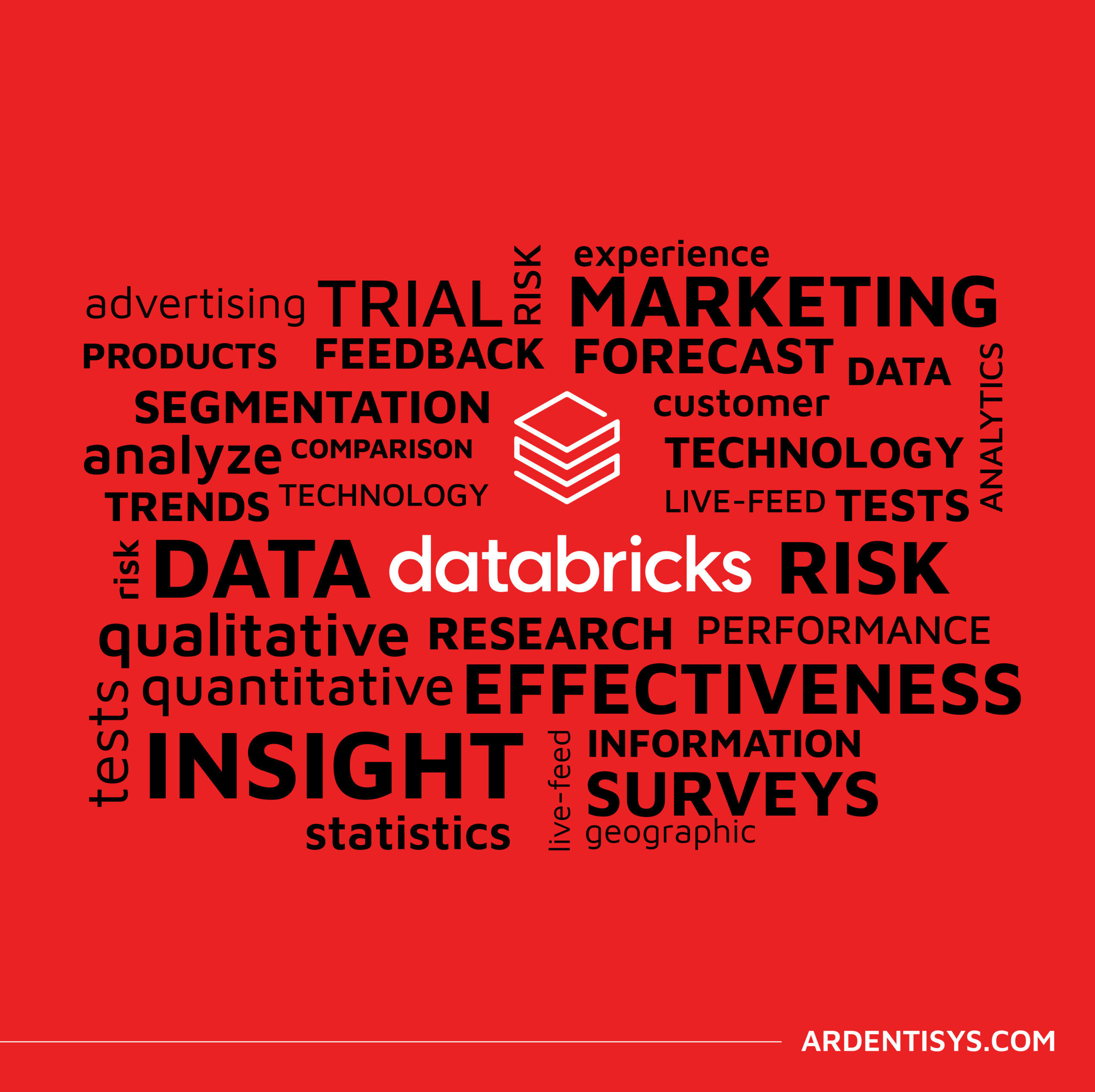
Why the Market Research sector is taking note of Databricks Data Lakehouse.
Overcoming Market Research Challenges For Market Research agencies, Organisations and Brands exploring insights across markets and customers, the traditional research model of bidding for a blend of large-scale qualitative and quantitative data collection processes is losing appeal to a more value-driven, granular, real-time targeted approach to understanding consumer behaviour, more regular insights engagement and more [...]
Read More... from Web app development three-tier architecture – understanding the differences






